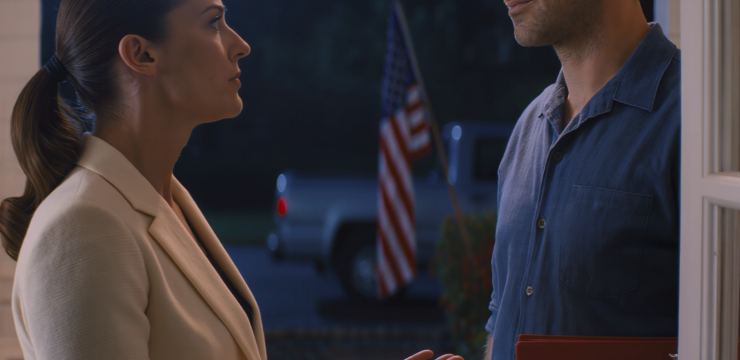In today’s digital world, where entertainment is always just a scroll or tap away, it’s easy to overlook the charm of a classic brain teaser. But every now and then, a riddle comes along that reminds us how much fun—and how mentally stimulating—it can be to pause and think. Recently, one clever riddle has been making the rounds online, capturing the attention of both casual readers and seasoned puzzle solvers alike. Known as “The Woman in a Boat” riddle, this little brain twister doesn’t test your math skills or logical reasoning in the usual way.

Instead, it challenges the way you process language and interpret words. Here’s how it goes: “There is a woman in a boat, on a lake, wearing a coat. If you want to know her name, it’s in the riddle I just wrote.” At first glance, it sounds like a gentle rhyme, maybe even too simple. But don’t be fooled. The answer isn’t hidden behind clever logic or obscure knowledge—it’s right there in front of you, hiding in plain sight. The key is in the final line: “If you want to know her name, it’s in the riddle I just wrote.” Read that again carefully. The name is literally in the sentence. So what’s her name? The answer is “There.”
The riddle begins with “There is a woman in a boat,” and it tells you that her name is in the riddle itself. Many people overthink this one, searching for complex meanings or hidden messages, but it’s all about taking the words at face value. Sure, “There” might not sound like a typical name, but structurally, it fits the riddle’s clues perfectly, making it both witty and unexpected. And that’s what makes this riddle so much fun—it forces you to rewire how you normally interpret language. If this got your brain buzzing, you’re not alone. And there are more riddles just like it that play with phrasing, assumptions, and sound to trip up even the most confident puzzle lovers. Let’s try another one: “Mr. Smith had four daughters. Each of his daughters had a brother.
How many children does Mr. Smith have?” At first, people often assume each daughter must have her own unique brother, which leads them to guess eight children total—four daughters and four brothers. But the riddle doesn’t say that. It simply says that each daughter had a brother. That means all four daughters share the same brother. So the correct answer is five children: four daughters and one son. This riddle works because of a common tendency to assume more than is actually stated, which highlights how easily our brains can be tricked by subtle wording.
Now here’s one that relies on how words sound when spoken aloud: “I met a man on London Bridge. He tipped his hat and drew his name. He cheated at the guessing game. What was the man’s name?” It might not seem obvious at first, but listen closely to the line “he tipped his hat and drew his name.” Say it out loud. It sounds an awful lot like “Andrew is his name.” That’s the answer. The riddle relies on phonetic trickery, using wordplay that only makes sense when heard. This clever use of sound makes it more of an auditory puzzle than a visual or logical one. Riddles like these are more than just a fun distraction—they’re mental workouts that test your ability to observe, listen, and think in unconventional ways. They’re a great reminder that not every problem needs a complex solution and that sometimes, the answer is hidden in plain sight, just waiting for you to look—or listen—closely enough. Whether you solved these riddles on your own or needed a little nudge, the joy is in the challenge. Share them with friends, test your family members, or drop them into a group chat and see who catches on first. In a world full of complicated answers, sometimes the most delightful surprises come from the simplest puzzles.





